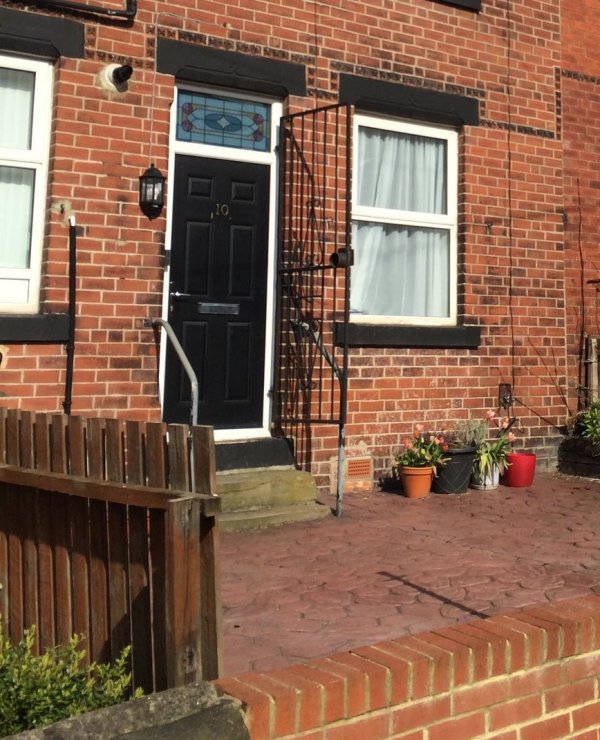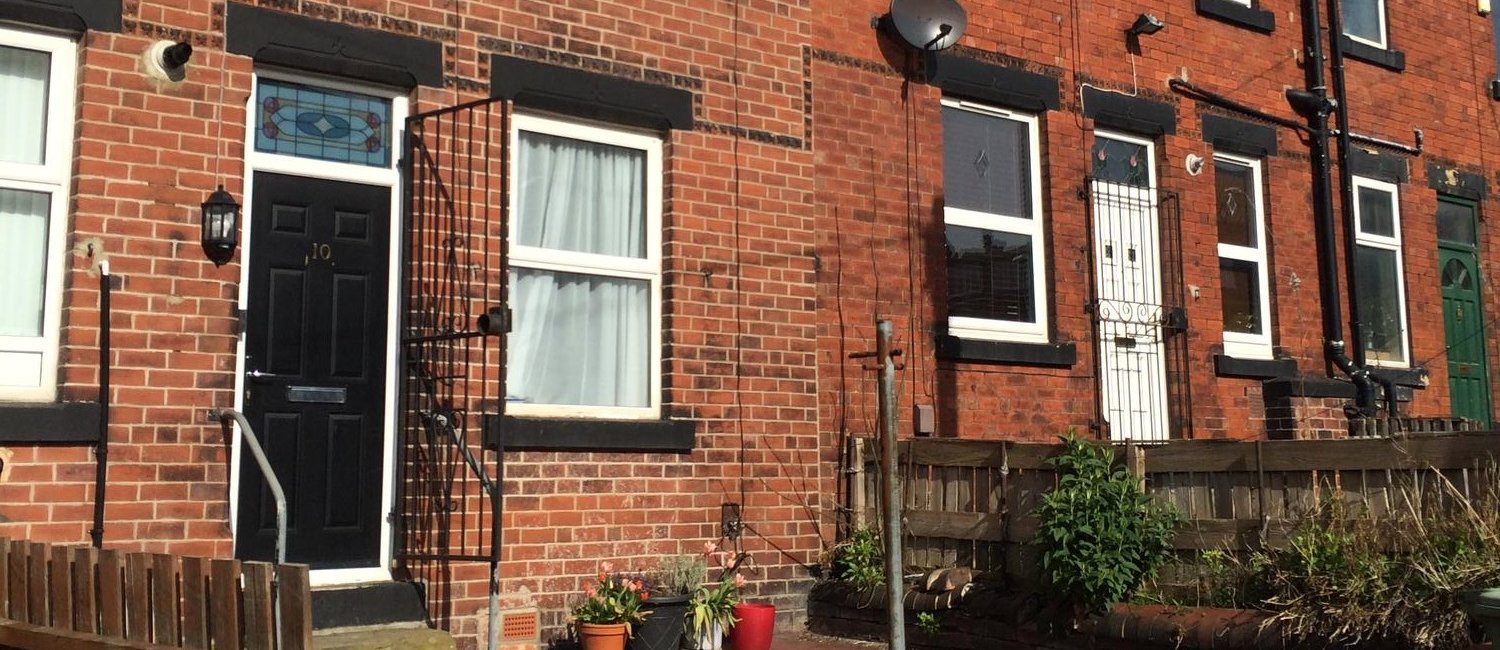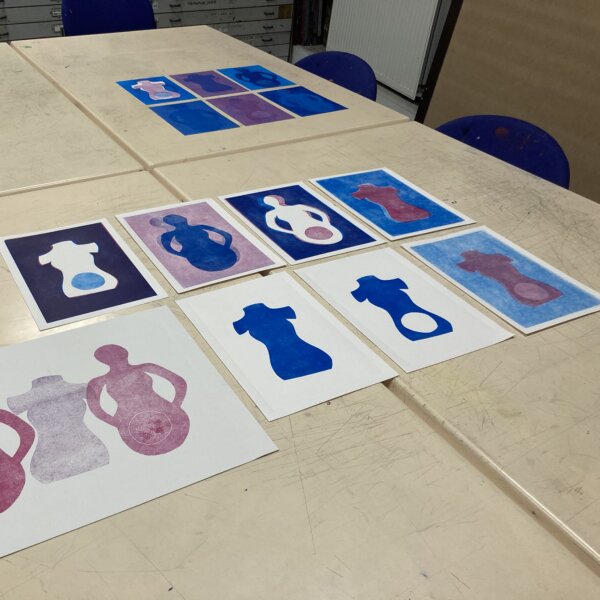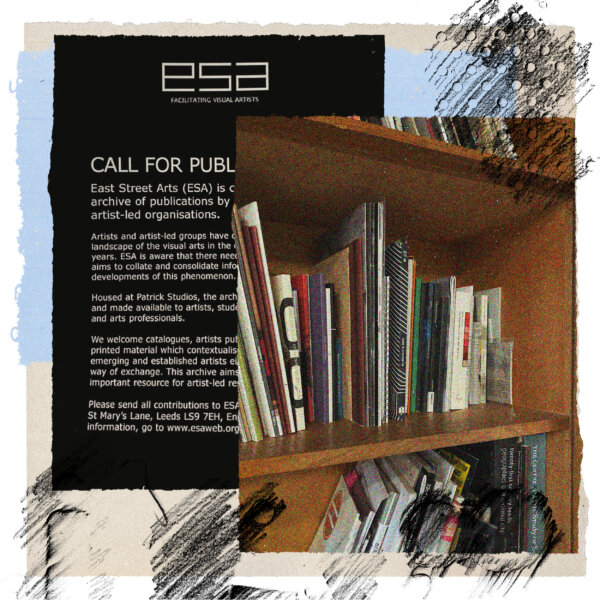That house is home to Threshold, an exciting new art space to allow people to experience sculpture in everyday situations. The brainchild of Leeds based artist Julia McKinklay, the new space will exhibit the work of local artists as well as those from further afield.
Threshold will offer a space to experiment with sculpture outside and away from traditional art exhibition spaces.
The first of four exhibitions, Alice Chandler’s Privet is set to launch on 24th April to be followed by three more shows throughout 2021.
We spoke to Julia about her work, the inspirations behind Threshold and the challenges in bringing it to life.
What’s your background?
I’m an artist working across sculpture, installation and print. I studied sculpture at the Glasgow School of Art and The Slade School of Fine Art in London before moving to Leeds to work on a practice-based PhD at Leeds Beckett University in collaboration with Yorkshire Sculpture International.
I’ve been working within the YSI festival team for the last three years while making a new body of work. I also really enjoy teaching and currently teach mokuhanga (Japanese woodblock printing) at Leeds Print Workshop.
What does your work aim to say?
My installations and bodies of work represent semi-fictional environments inspired by research in museums, landscapes and industrial spaces. I work with processes in the studio that mimic events in nature through the involvement of chemical reactions, heat and pressure. My work experiments with the overlaps between material processes in nature and those in the studio or workshop, and invites the viewer to explore the perceived boundaries between human and non-human made things.
For example, recently I have been making work in response to the collecting activities of the xenophora carrier snail, a mollusc that curates and attaches detritus from the sea floor onto its shell. I have also been working with slag, a kind of synthetic volcanic rock formed through metal casting in my work as a form of human-made geology.
How has your practice changed over time?
I have always made work about my interest in nature, environments and the way materials behave and imitate natural phenomenon. But over time I have found new ways of working that has helped my practice to grow and develop. During my MFA I was able to access printmaking facilities and found that I had an affinity to print and how it allowed me to move between two- and three- dimensions and make works in series. I now make installations that often have a 2D printed counterpart, and I’m interested in the idea that printing can be a way of collecting ideas and subjects. By working with YSI during my PhD, curating has now become an extension of my creative practice and now I am curating a series of exhibitions called Threshold in the front garden of my back-to-back terraced house in Burley.
Who/what influences your work?
Visiting museums and galleries is always really useful – I always come across something that chimes with an idea that I’ve had for new work. Through my PhD research I have been able to spend a lot of time in the mollusc archives at the Natural History Museum and Leeds Discovery Centre and I’m looking forward to getting back into these museums to continue my research. Spending time in workshops is also influential, finding a new technique or material can take my work in a completely new direction.
What led you to create Threshold?
Organising a group exhibition for Index Festival called Kuroko really highlighted to me how difficult it is to exhibit sculpture using meanwhile spaces in Leeds. The space for Kuroko fell through twice at the last minute and the show was almost cancelled, which would have wasted the hard work of the participating artists, and a year of planning and fundraising.
I find that I don’t really make sculpture until I know where it might be exhibited, as it is expensive to make and difficult to store. I think the lack of reliable space for exhibitions disproportionally affects early-career artists working in 3D, and we have many brilliant artists working in sculpture in Yorkshire.
Thinking about what space I could access that wouldn’t disappear I realised that my front garden would be a perfect space for exhibitions as it is a clear space visible from the street. This idea has grown into Threshold and now we are nearly ready to open the first of four exhibitions this year.
What are your ambitions for Threshold?
I hope that Threshold will make seeing sculpture more of an everyday activity for the residents of Burley and a way to see exhibitions when our lives are so restricted by covid. The exhibiting artists are all early-career and I hope that they find Threshold an opportunity to experiment and develop new ways of working that are suited to outside spaces and the very specific environment of a Leeds terraced street. We are also commissioning editions by each artist and will be selling these through Threshold Editions.
This could become a kind of circular economy to financially support artists in the region and fund future shows. If the first series of exhibitions go well and there is enough interest, it would be brilliant to continue the programme into 2022.
How do you see Threshold being received by audiences? How do you envisage people engaging with your art?
It is hard to say at this point, but hopefully the sculptures will be something interesting and different to visit while walking through Burley. The exhibitions will be documented and available to view online if you can’t make it to the space and we hope to make a podcast for each show to discuss the sculptures in more detail. Feedback on the project has been encouraging so far, but we will have to see what happens when we open!
What drew you to the artists you are working with for Threshold?
Mostly it was instinct that they would enjoy the challenge of responding to the space and together would complement each other’s work across the series of exhibitions. My approach to curating is an extension of my studio practice where I bring together different subjects and ideas to see how they form connections and narratives, so hopefully this happens with Threshold this year!
Alice Chandler’s work investigates our relationship to the domestic and functional through working between art, craft, and design and her exhibition will responding to the context of the traditional, domestic garden space. I got to know Victoria Lucas’ work through participating in the YSI Sculpture Network last year. Her work re-maps and embodies the material strata of landscape and her work will bringing these ideas to the urban landscape of Burley.
Emii Alrai makes amazing sculptures about the post-colonial museum practices of collecting and displaying objects and I am excited to see how her works that feel like quasi-museums and archaeological artifacts behave in an outdoor space.
I am also exhibiting during one of the exhibitions and Jacob Farrell, who I studied with at The Slade, will be writing a new text for the show. We are both interested in foundries and forging and so working with metal is a connection between our work.
What is the biggest challenge that you’ve faced putting Threshold together?
So far, Threshold is coming together slowly but steadily, and this is because of the commitment of the artists and the fantastic advice of my advisory group.
Organising a space is a juggling act and so it is incredibly helpful to work in a team with creative people who can be a sounding board and help solve problems as they arise. We are currently working hard to prepare for Alice Chandler’s exhibition opening on 24th April 2021.
Discover more about Threshold’s programme of exhibitions, the opening weekend of Privet and sign-up to their mailing list HERE.
Other things!
-
News
Artist-Led Housing: Histories, Residencies, Spaces - available to buy!
Architectural researcher Dr Jonathan Orlek's brand-new publication, Artist-Led Housing: Histories, Residencies, Spaces is now available to buy.
-
News
Taipei Residency: Artist Call Out
Are you an artist using sound and audio-visual media at the core of your practice? Do you want to collaborate with communities and other artists to develop new artworks? Apply now! Deadline 12pm, Sunday 5 May 2024.
-
News
Leeds Creative Labs Follow on Fund: Herfa Martina Thompson Dr Zoe Tongue
Visual artist Herfa Martina Thompson and Law lecturer Dr Zoe Tongue first collaborated as part of Leeds Creative Labs, a programme that partners artists and academics, initiated by the University of Leeds’ Cultural Institute and facilitated in partnership with East Street Arts.
-
History
Listen to the Sounds of New Briggate
Sounds of New Briggate is our podcast series - hosted by local people, telling local stories - which celebrates New Briggate, a unique and vibrant high street in the heart of Leeds.
-
News
Artist Mohammad Barrangi’s large-scale murals come to the streets of Leeds
We're working with Leeds-based, Iranian-born illustrator and printmaker Mohammad Barrangi to bring three large-scale paper murals to the streets of Leeds.
-
Artist support
Submit your publications to our exhibition and learning library
Do you make books or printed materials on artist-led housing, live/work spaces, civic practice or living archives? Contribute now! Together we can learn.








